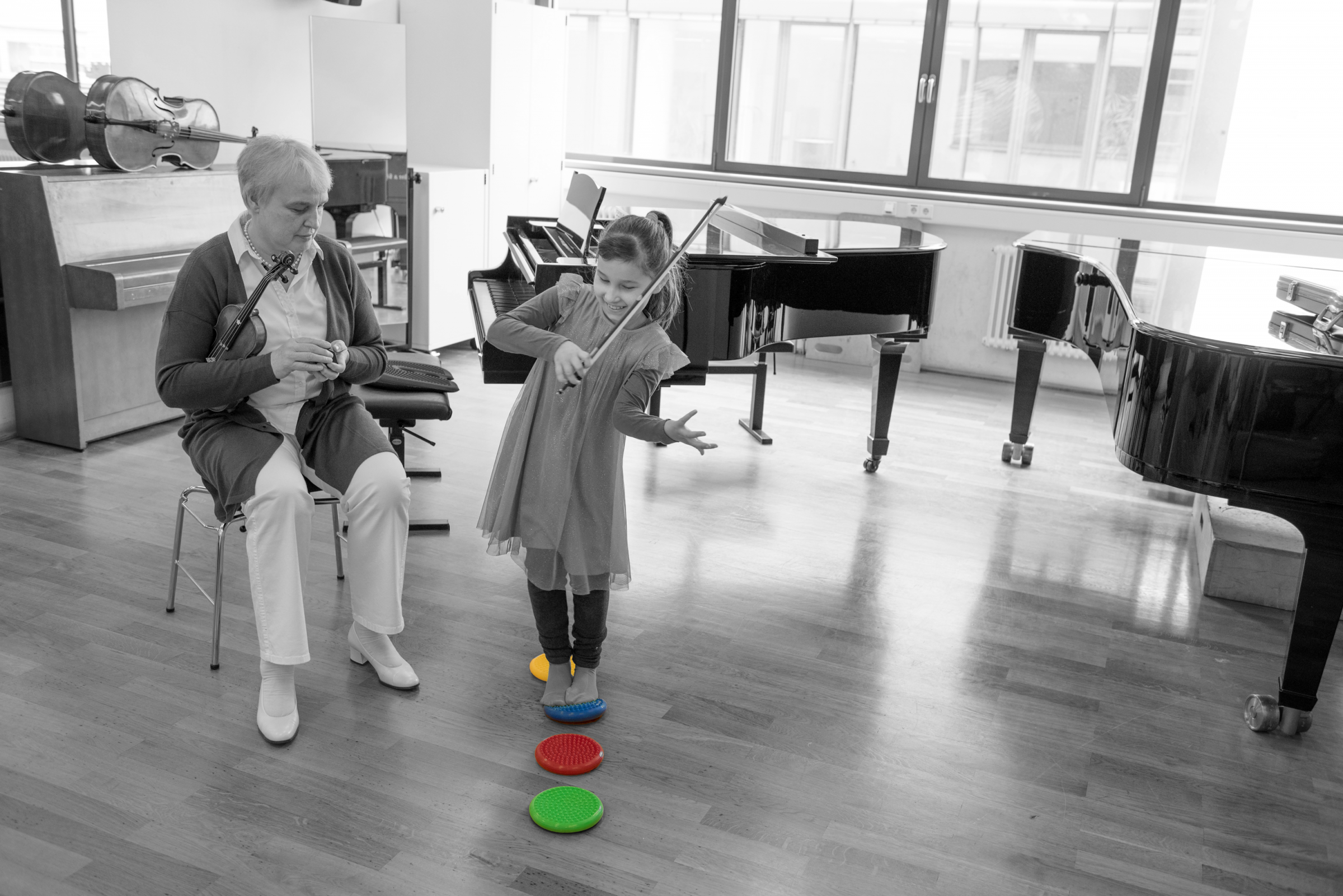Many paths lead to activated equilibrium
To be able to hear with both ears, we need a good balance. For us musicians, this is particularly important because our hearing also influences the sound. We also need balance to be able to coordinate our complex movements and perform them correctly. The positive news is that balance can be constantly improved and developed. It is particularly effective to combine this directly with practice. There are tried and tested aids that can be used in a variety of ways for this purpose in your own practice or when teaching.
Like child's play: the children stand light and easy on the Mini Ballkissen® Kids cushions and shift their balance from one to the other, with and without their instrument. This is fun for them, and at the same time they train their sense of balance and with that improve their hearing. This activity is accompanied by a host of additional benefits that have a direct impact on violin and viola playing.
But other helpers are also suitable. A studded rubber mat is particularly suitable for people who react sensitively to undulations. At first we didn't even realize how strongly the balance is activated here, until several people told us that it was "shakes" under their feet. The large ball cushions are always a challenge, even for those who are practiced in balance. They can be used to train good body control while practicing. The AeroStep is the "convenient" helper here. You stand on two independent air chambers and can level off while doing so. The mat is - as it does not shake so much - also a very good aid for a good stand >>a good stand<<, although a clear distinction is not possible: the better the balance, the better the standing quality.
If you "only" activate your balance, you could also do that outdoors in nature and balance on a tree trunk or something similar. Playing the instrument at the same time makes the decisive difference: The body learns to combine "getting better" on the instrument with simultaneous relaxation and activation of balance. In addition, tensing and relaxing the muscles work better. The connection of all these parameters is just as valuable in a qualitative sense (sound change) as in effectiveness (better and more lasting practice results in a shorter time).
It can also be observed that visible tensions in the body such as hunched shoulders, pushed knees, etc., change. Players themselves reflect that it is easier for them to better "influence" their movements consciously. They also reported that they find it easier to focus on the body and the music. Teachers often perceive an improved ability to concentrate.


